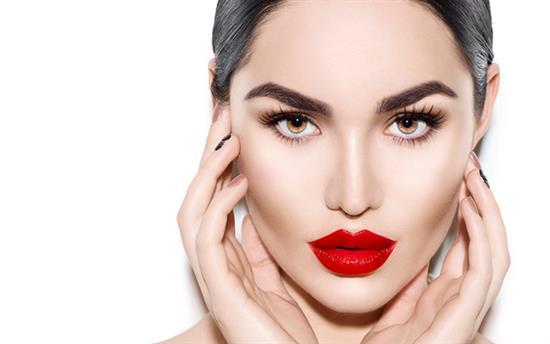
If you are unhappy with the way the ageing process is changing your upper face there are surgical solutions which can help to improve your appearance if you so wish. For many, we begin to notice the signs of facial ageing around the eyes a little earlier than the lower face, and while you may assume an eye lift (upper or lower blepharoplasty) might be the right procedure for you, you may want to learn more about brow lift surgery first. Otherwise known as a ‘forehead lift,’ brow lift surgery is an invasive cosmetic procedure undertaken by plastic surgeons to lift and improve a dropping brow line.
As we get older the forehead can begin to ‘drop’ leaving the eyebrows sitting lower than previously. Aside from the aesthetic implications of a drooping brow, this issue may also cause the further excess skin to overhang on your upper eyelids, ageing you further. The purpose of a brow lift is to rejuvenate the upper face by surgically lifting the skin on the forehead; at the same time giving a subtle lifted look to the brows themselves.
Most commonly performed using an endoscopic or keyhole technique, brow lifts are often carried out in combination with other facial rejuvenation surgical procedures. It’s common to combine an upper eyelid reduction with brow lift surgery to rejuvenate the entire upper face, and some patients opt to combine brow lift surgery with a facelift to rejuvenate the face in its entirety.
Booking a consultation is the best way to determine if brow lift surgery (as a stand-alone treatment or as part of a facial rejuvenation makeover) is the right procedure for you and your concerns. Mr Chana is a highly experienced plastic surgeon, and having performed brow lift surgery many times in his career he will be able to work with you towards your surgery and reaching your aesthetic goals safely.
What happens during brow lift surgery?
• During endoscopic brow lift surgery five small, well-hidden incisions are made within the hairline to permit the endoscope to be inserted below the forehead skin. No scars should be visible on the skin of the forehead due to the careful choice of incision points. The tissues are then moved upwards and the eyebrows are carefully lifted.
• It’s possible to remove some of the frown line muscles at the same time.
• The forehead skin is then reattached at a higher point using a permanent stitch. This is fixed to the bone.
• Finally, all incisions are closed using dissolvable stitches. Brow lift surgery is carried out under general anaesthesia. You will usually be required to stay over for one night in the hospital.
Recovery
Although you may have a mild headache post-surgery for a few days, pain is relatively uncommon after brow lift surgery; any pain encountered can be dealt with using mild analgesic tablets which will be prescribed. It’s important to remember that aspirin or non-¬steroidal anti-inflammatory tablets must not be used to control pain after brow lift surgery since these will risk bleeding or excessive bruising. Sleeping upright is advised for a week or so to reduce any swelling you may encounter after brow lift surgery, and you should avoid vigorous activity for a week.
There is usually no bruising visible on the forehead but since brow lifts are usually performed in conjunction with an upper blepharoplasty (eyelid rejuvenation surgery) there is usually some bruising around the eyes and upper face for approximately 14 days. Infection and complication rates are low after brow lift surgery, as is postoperative bleeding or chance of haematoma. There is a chance you may temporarily lose some sensation in the skin on or around the forehead and scalp – due to stretching of the nerves – but this usually resolves itself within a few months of brow lift surgery.
Booking a consultation with Mr Chana is the best way to understand more about brow lift surgery, along with the risks and complications you should be aware of prior to undergoing the procedure.
